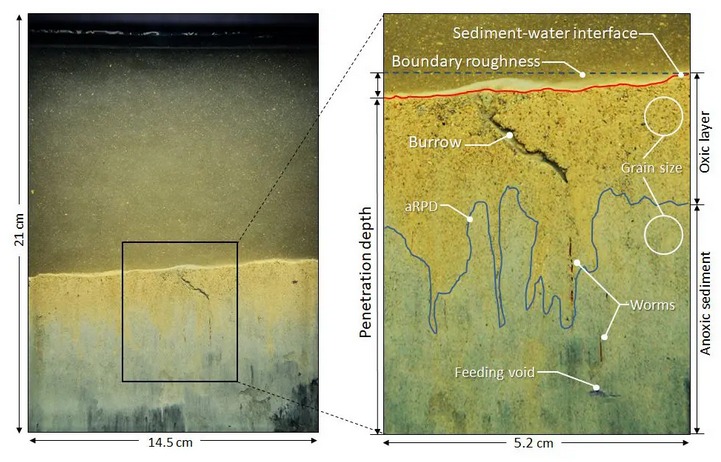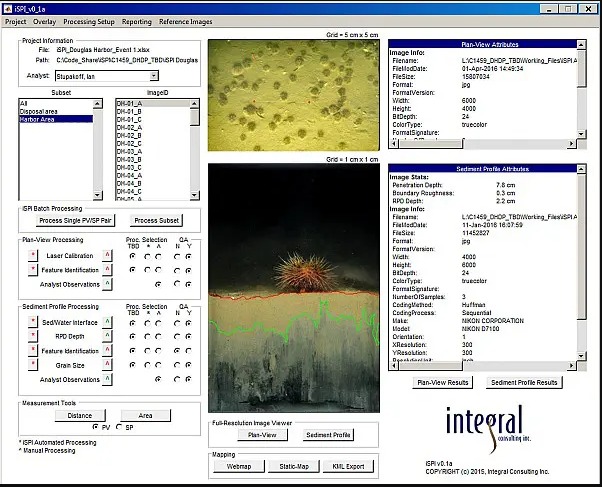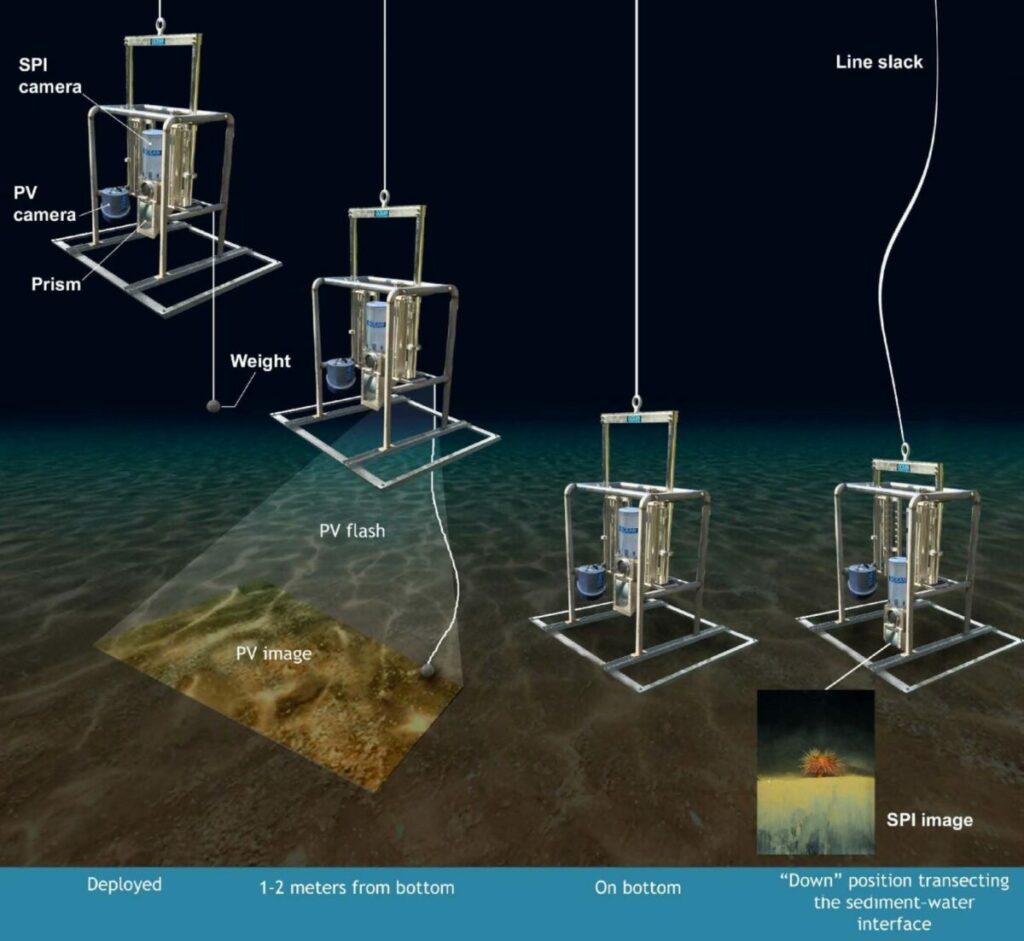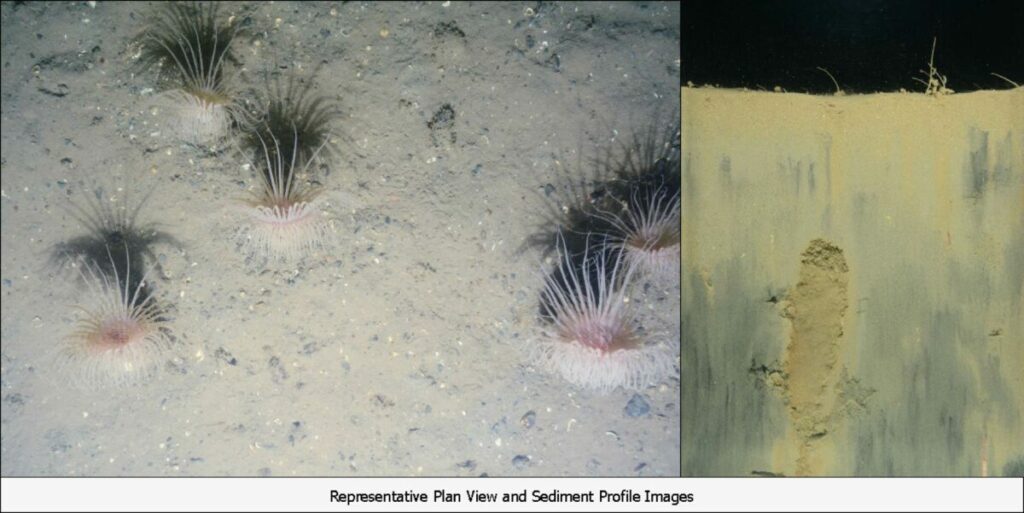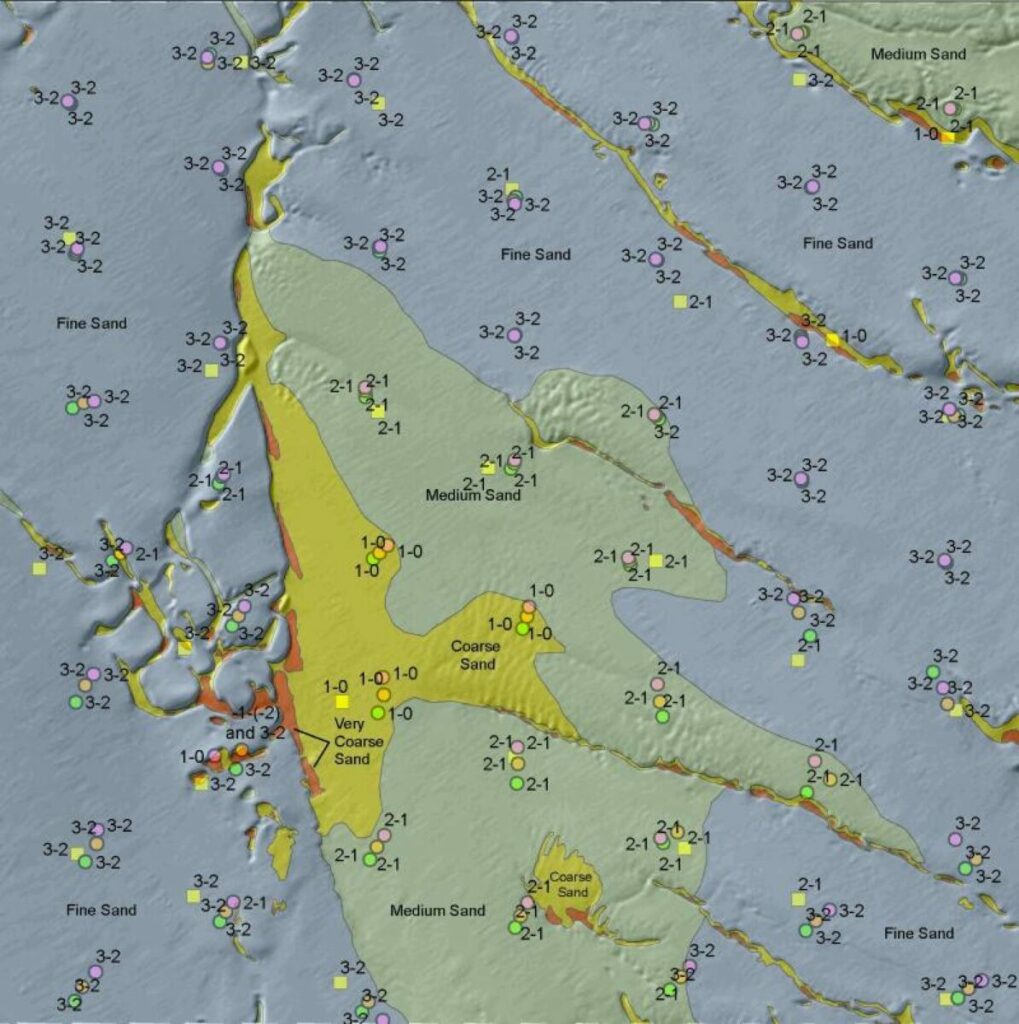Sediment Profile and Plan View Imaging
Rapidly map broad areas of the seafloor
Sediment profile and plan view imaging (SPI–PV) is a cost-effective way to map physical, geochemical, and biological seafloor conditions. The high-resolution SPI–PV camera captures collocated images of the upper sediment column in profile and the seabed in plan view.
The SPI-PV System
How It Works
The SPI–PV system is lowered to the seafloor. First, the plan view image of the seabed is triggered by a weighted bounce switch. When the frame lands, the SPI camera prism sinks into the sediment—capturing a profile image of the bottom. The entire system is then lifted up and can be “pogo-sticked” along the seafloor to quickly collect multiple bottom SPI–PV image sets. The system uses internal batteries for power, so deployment is easy from any vessel of opportunity equipped with a standard winch.
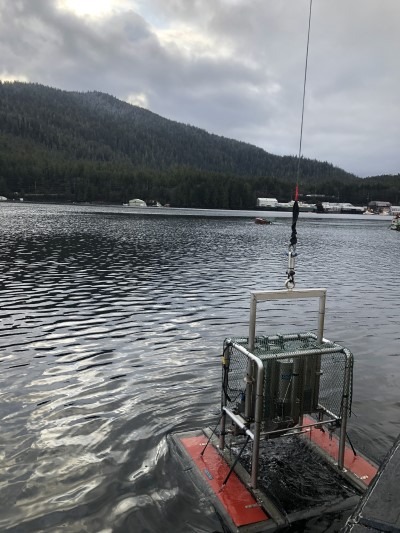
What It Sees
SPI is the only tool that obtains high-resolution images of the top 20 cm of the sediment column without disturbing stratigraphic features or animal–sediment relations. This unique perspective complements all other seafloor mapping techniques (e.g., multibeam echosounder, side-scan sonar, towed video) by obtaining detailed, fine-scale information on surface sediment characteristics.
The annotated SPI image (above) shows physical/geochemical features (penetration depth, boundary roughness, grain size, and the apparent redox potential discontinuity [aRPD] depth) and biogenic features (worms, feeding void, and burrow) that can be observed and measured in the images.
Plan view images collocated with the SPI images provide a landscape view of the seabed and complement the SPI information. The above image shows physical features (grain size, shell lag deposits, anthropogenic disturbance) and biological features (flounder, urchin, hermit crab, and lebensspuren).
Automated Image Analysis
Measurement of key features is easy and semi-automated with our integrated image analysis platform, iSPI. Designed and developed by Integral, this advanced software provides a graphical user interface that allows the image analyst to measure and add descriptive comments for key features. Deep learning techniques are incorporated, automating or semi-automating the identification and measurement of key features, such as grain size and biogenic structures.
SPI–PV Project Locations
SPI–PV can address your seabed monitoring and mapping needs. Applications include sediment remediation monitoring, ocean disposal and contaminated site monitoring, seabed benthic habitat mapping, offshore renewable energy baseline environmental studies, offshore oil and gas environmental assessments, and remedial investigations.
Explore some our previous projects below.
Selected Projects
For more information on Integral Consulting and
sediment profile imaging, please contact:
Sources
Content
Site Photos
Integral Consulting Inc.
Stefan Wodzicki, Frank Spada, and Conner Schultz, Integral Consulting


